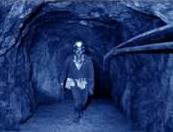Michael Fumento
Factual · Powerful · Original · Iconoclastic
The Cancer Institute's Ridiculous Radon Redux
January 01, 1997 · Michael Fumento · CancerAccording to the Journal of the National Cancer Institute (JNCI) , household radon gas is a major threat. According to the Journal of the National Cancer Institute (JNCI), household radon gas is not a major threat.

Confused? You should be. In fact, confusion may be the whole purpose of the most recent radon report in the JNCI. That study, chiefly authored by the National Cancer Institute’s Jay Lubin, looked at 11 groups of radon-exposed miners and concluded what virtually everyone else who has studied these miners has concluded — that they are suffering rates of lung cancer so high that they can only be attributable to radon.
Fine so far. But the paper concludes by saying this appears to support the EPA position that 15,000 American lung cancer deaths a year are from exposure to radon not in mines but in houses. Estimates have put identifying and fixing this problem nationally at about $45 billion, a figure big enough to glow in the dark without the help of radiation.
The Lubin study contrasts with one published in that same journal in December which looked at households with relatively high levels of radon exposure and found — like the great majority of such studies — no increase in lung cancers.
The explanation given is that the body can throw off the affect of small doses of radon much as it can withstand small doses of cyanide or arsenic but succumbs to larger ones. Household levels are so are far below those which miners typically receive that it’s impossible to identify a useable group of homes in any one study in which occupants received anything near the least exposure the miners received.
How did the Lubin study deal with the December one? It didn’t. Hold it up to the light, use a magnifying glass, squint until you see stars, but you won’t find the December report mentioned. Yet Lubin was a named contributor on the December study. It’s not like he could have just forgotten about it.
Actually, the Lubin article mentioned no household epidemiological studies, an oversight that flabbergasted some of the radon epidemiologists to whom I told this. (Lubin and the second author, John Boice Jr, were either unavailable or chose to not return my calls.) But of course, it was no oversight at all. Rather it illustrates the political game that radon has become.
On one side is the EPA and the radon establishment, which includes Lubin and another contributor to his study, Johns Hopkins researcher Jonathan Samet. These people say that unless there’s enough evidence to the contrary — as judged by them — we must assume that if radon causes lung cancer at extremely high exposure levels then it must do so at the lowest levels. This is called the "linear, no-threshold theory" [LNT] because it says there is no threshold below which there is no harm.
On the other side are a huge number of epidemiologists, doctors, and physicists. These people would be very concerned if they actually believed 15,000 Americans a year were suffering a particularly painful death from household radon — but they don’t.
The June issue of the Health Physics Newsletter features 22 letters from radon-studying professionals. Virtually all refute the no-threshold view. An accompanying editorial stated, "We invited responses from both sides’ of this issue, so [we] don’t know how to interpret the lack of reaction from the LNT supporters."

The only real victims of radon have been miners.
Try this interpretation. The radon establishment and the EPA are far more comfortable dealing with a scientifically ignorant media than with a body of scientists who have studied the issue for decades. The Lubin study itself exploits the short memories of most reporters. Of 39 references on the Nexis computer database concerning the Lubin study, not one mentioned the December JNCI study, even though it got fairly wide coverage at the time.
Even the EPA’s own Science Advisory Board has questioned the agency’s blind use of the no-threshold theory, saying "Because of the uncertainties in projecting high-exposure observations to low exposures . . . and from mine environments to the home, the estimates of annual radon-related cancers could be substantially in error."
Yet the radon establishment just chugs along. As one of the letters in the Health Physics Newsletter explains, the no-threshold model is "maintained by value systems . . . not science fact." It became, "an article of faith."
The establishment will keep chugging, because Defender of the Faith Jonathan Samet is top dog on a National Academy of Sciences study due out next year.
As to the EPA, its stakes are immense.
The Lubin study was a boost for an agency worried sick about the Republican-dominated Congress. Targeted for "zeroing out of the budget" is the EPA’s Radon Action Program, which sets all national radon policy. The December JNCI study had set the agency into a tizzy, and Inside EPA reported that agency officials fumed mightily over its coverage. I’m delighted to note it singled out one especially pesky piece which appeared in the Washington Times authored by the present writer.
Yet even if job security weren’t everything to a useless bureaucrat, there are greater considerations. The assumption that carcinogens don’t have thresholds is a bulwark of environmental regulation. If radon topples, so too does the core argument against dioxin, passive smoking, any number of pesticides, and things the EPA is only just now d
